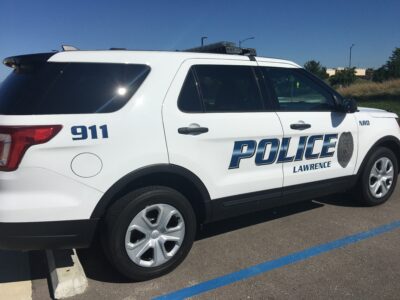KU graduate student in critical but stable condition after chemical contamination
A Kansas University graduate student was hospitalized with life-threatening injuries Thursday after accidentally ingesting a toxic chemical while working in a university lab, KU officials said.
University officials would not identify the student, who they said suffered cardiovascular and breathing problems and was in critical but stable condition at Lawrence Memorial Hospital.
Chris Keary, assistant KU police chief, said investigators were working to figure out exactly how the student ingested sodium azide, a toxic chemical commonly used in different areas of research.
“He was in intensive care and was able to communicate with us enough to give us some of the basic information,” Keary said. “The doctors were concerned for his well-being and our ability to talk to him and how that was affecting his well-being, so we only had a limited amount of time and information to get from him.”
The student was working in a lab about 10 p.m. or 11 p.m. Wednesday on the fifth floor of Malott Hall, 1251 Wescoe Hall Drive, the university said. He did not get sick until after he got home.
After learning about the illness around 2:30 a.m. Thursday, KU police evacuated Malott Hall and the connecting Haworth Hall, 1200 Sunnyside Ave., until city fire and university investigators determined that the chemical had not been spilled and that the lab and building were safe for others to occupy. The building was reopened about 5 a.m., Keary said.
The university used its emergency alert system to notify students, faculty and staff by text message and e-mail of the incident before classes began Thursday, said Lynn Bretz, university spokeswoman.
“We didn’t want to have any confusion about whether or not Haworth or Malott halls were safe to enter,” Bretz said. “We didn’t want any confusion about whether or not there had been a chemical spill, so the best way to do that was to be proactive and basically let everybody know.”
Mike Russell, director of the KU Environment Health & Safety office, said the odorless chemical involved in the situation looks like table salt. He said, according to protocol, the chemical should be handled with gloves, under a fume hood and with a laboratory spatula.
“It doesn’t take a lot of this material to cause adverse health reactions,” Russell said. “How much he may or may not have come into contact with, we cannot speculate at this time.”
Keary said no foul play was suspected and that investigators were waiting to talk to the student more to figure out how exactly he ingested the chemical.
“We’re concerned about his health No. 1, getting him healed and back to normal life,” Russell said.







